What is panel formwork and how to install it?
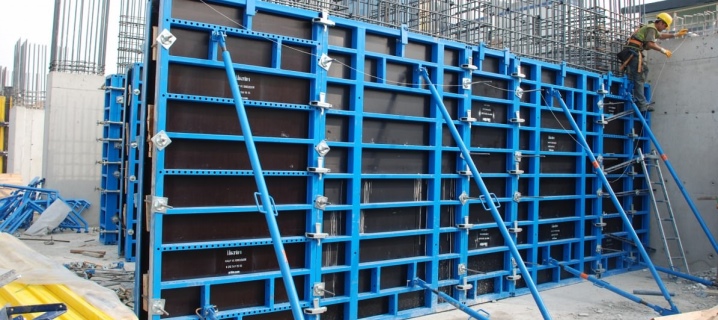
Almost all existing types of modern foundations are created using a structure such as formwork. It is used not only to fix the required width and depth of the foundation, but also in some cases to strengthen the structure and give it additional rigidity. In addition, the formwork has a perfectly flat surface, which will be the best solution for applying waterproofing materials.
An interesting solution for the construction of several objects at once will be panel formwork. It can be reused. It is installed, and after pouring with concrete, it is removed. Let's try to figure out what this design is and how to use it correctly.
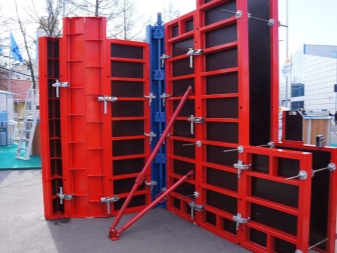
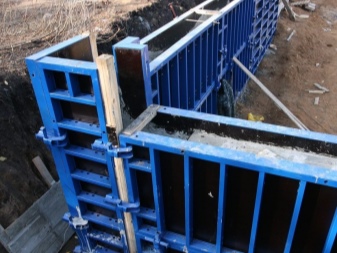
Peculiarities
Panel formwork for walls and foundations is a collapsible structure, which is dismantled after the concrete has completely solidified in it. It belongs to the so-called special frames. Its structure is as follows.
- Shields. They are the main structural element. Their surfaces should be smooth and even, because they will create the appearance of the finished monolith. Panel formwork, which can be created with various materials, is usually attached to the frame.
- Fasteners. Here they are bolts or special locks. They are used to assemble a structure from disparate parts into a single whole.
- Equipment to support the structure in a stable position. Usually it is made of material that is not susceptible to stress. The reason is that it will have to support the large weight and load that appear after pouring concrete into the formwork.
Formwork installation work should be carried out on a flat and clean surface, which was previously well tamped. It is important that the considered category of formwork is installed correctly and corresponds to the required dimensions: length, height, width, thickness. Using a plumb line, they are checked for perpendicularity to the base.
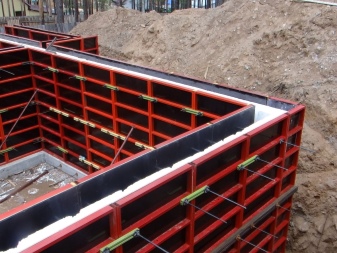
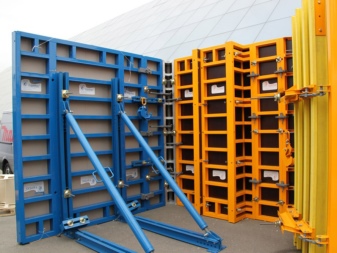
When installing it, it is necessary to ensure the tightness of the shields in the area of \ u200b \ u200bthe joints. After dismantling, it should be cleaned and stored in a safe place.
Applications
The main feature of such a device will be its versatility and the possibility of using it not only for monolithic construction, but also for the construction of any types of surfaces.
If you look at the purpose, then such systems are divided into several categories.
- For concreting foundations and walls. In most cases, a small-panel type structure is used for these purposes. The reason is the absence of the need to involve various lifting mechanisms. In this case, all the work is easy to do on your own in a few hours.
- For creating round pillars and columns. Shields of the considered type of formwork are used to create towers, as well as elevator-type granaries.
- For filling floors. Such structures are used in the construction of objects of various heights and purposes from reinforced concrete. Also, panel formwork is used as the external surface of the bearing type when creating openings for window and door blocks.
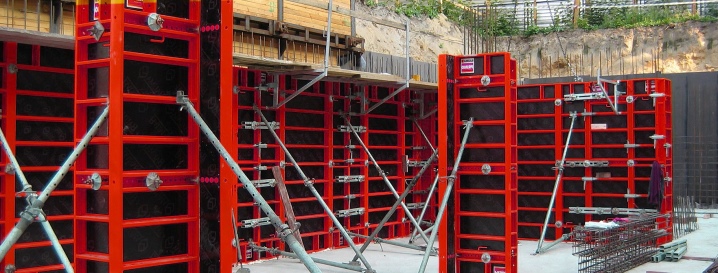
Main types
If we talk about the main types of panel formwork, then usually two categories are divided, which have their own structural features:
- small-panel;
- large-panel.
Let's try to figure out what are the differences between these categories and what features they have.
Small-shield
This type of formwork differs in that the area of the boards is no more than 5 square meters. Usually, the most popular models here are structures with dimensions of 750x3000 and 1200x3000 mm.
Large-panel
If we talk about large-panel formwork, then usually the area of the panels in this case ranges from 5-80 square meters, and the mass of the elements is no more than 50 kilograms. This makes it possible to assemble by hand.
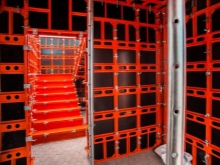
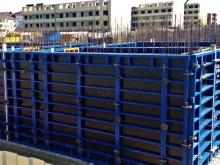
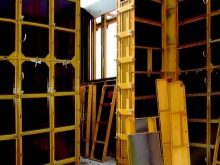
Note that the choice of the category of formwork will depend on the dimensions of the structure. It often happens that both types of formwork are used in the construction of buildings.
Shield materials
Formwork can be removable and non-removable. Modern models of the second type are usually created from expanded polystyrene or materials with similar properties. Such a prefabricated structure is a waterproofing and heat-insulating coating, because of which, after the base is dry, it will be enough just to close the joints between the plates with the help of polyurethane foam or sealant.
Note that removable inventory formwork of small-panel and large-panel type is:
- aluminum or steel;
- plastic;
- wooden.
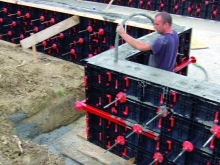
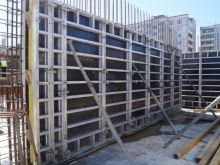
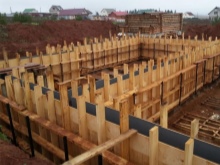
Now let's say a little more about each.
- Steel solutions are distinguished by their massiveness, high weight, but at the same time high strength. Usually, the steel or aluminum version is used in the construction of large facilities, where the high strength of protective foundation structures is an important point. In private construction, this category is almost never used due to its high cost. The aluminum formwork panel will be lighter, but it bends easily under load, which is why it is often necessary to use different support mechanisms. Such products are classified as reusable.
- Plastic structures can be of any shape and size, which makes it possible to fill even round bases. Usually they are used in the construction of high-rise buildings. Considering that there are many components here, they are perfect for facade design. True, the cost of such a design is high. But at the same time, it can be installed quickly and is lightweight.
- Wooden structures have a simple structure, light weight and are very easy to install. Formwork of this type is usually done independently, but wood as a material has several disadvantages. For example, it can rarely be used again, and concrete adhering to the surface is then very difficult to clean. But on the other hand, it is very accessible.
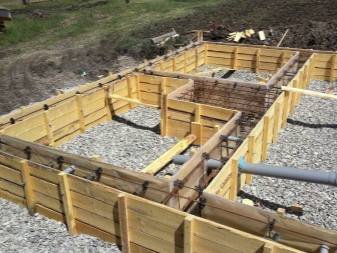

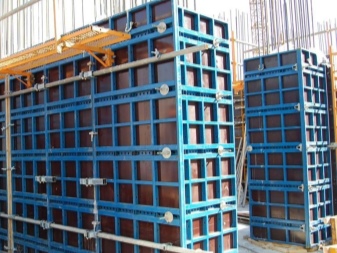

What is needed for work?
If you decide to make the formwork yourself, then it would be better to create a universal linear version of wood for carrying out small amounts of work. This will make it possible to significantly save money on the purchase or rental of the structure in question.
To create it, you will need to have at hand:
- construction stapler;
- cardboard or polyethylene;
- fasteners for fastening, as well as the fasteners themselves;
- wood resistant to moisture;
- bars for connecting panel elements.
In addition, to give the inner surface evenness, it is necessary to stretch the film or attach cardboard to the boards. True, sometimes tubes are used that support the frame until it is made, and its elements are securely fastened to each other. You just need to cook and cut the boards to size, after which you can knock down the shields.

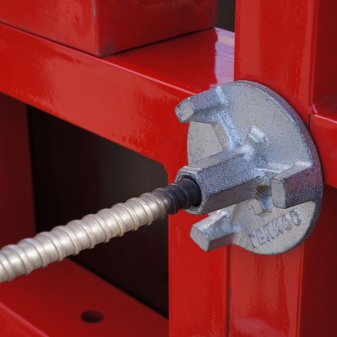
We add that with subsequent use, a special lubricant will be required, which will need to process such a shield. This will then make it easier to remove the remnants of concrete from the structure, because it will not stick.
Calculation and installation rules
When casting a monolithic type structure, it is necessary to determine as accurately as possible how much materials will be required for the manufacture of shields.
For the foundation
- Determine the height of the base, taking into account the allowances.
- Refine the length of the object perimeter.
- Determine the thickness of the lumber. It must be specified in the project. If the indicator is not there, then the thickness should be selected taking into account the work to be done. But usually they use an edged board of 25-30 mm.
The length of the object should be doubled by placing the shields opposite each other, and the result obtained should be multiplied by the thickness and height of the material. The resulting value will be the volume of lumber that is required to create linear formwork panels. You will also need to prepare the bars as plugs and braces.
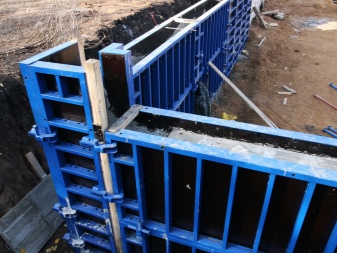
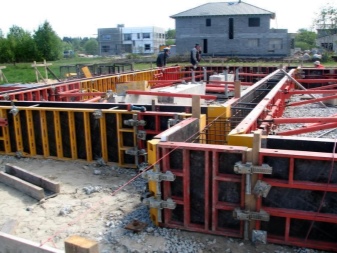
To create slabs
- Determine the height and area of the room.
- Check how thick the floor should be according to the project.
- The consumption of telescopic supports will be as follows - one per square meter. You will also need an appropriate number of tripods.
- Lumber is required to be distributed at the rate of 3.5 linear meters for each square that will be poured.
- Plywood sheets should also be prepared according to the floor area.
To fill the walls, you first need to calculate the area of the structure, taking into account the allowances. All calculations should be carried out in the same way as for the foundation.
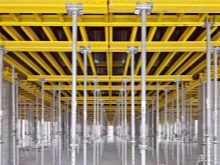
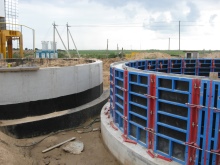
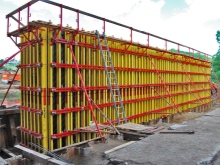
In any case, timber harvesting should be done with a certain margin. It is required to note that formwork panels are a universal thing and can be used to fill any structure.
Now we will give approximate installation rules. Do not forget that they will be determined by the purpose of the formwork:
- first, careful marking is carried out in the places where formwork panels will be mounted;
- assembly of panels, as well as installation of fastening elements and embedded parts;
- installation of shields clearly according to the markings applied earlier;
- installation of thickness limiters for load-bearing structures, as well as openings of windows and doors;
- installation of formwork panels on the opposite side of axial lines and their subsequent fastening to each other;
- installation of end-type shields;
- reliable fastening of structural elements to each other using tie-type bolts;
- installation of prepared pre-reinforced frames according to the applied markings;
- creating a strong layer between the formwork and the reinforcement using polymer clamps.
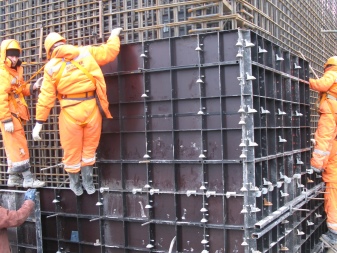
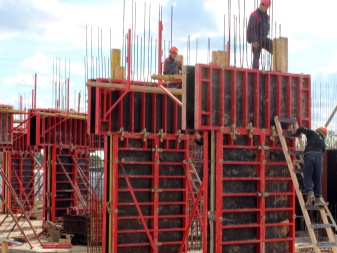
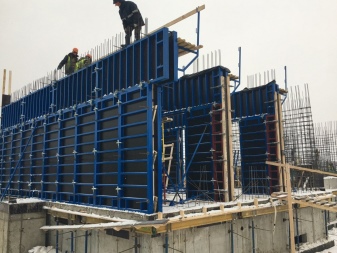
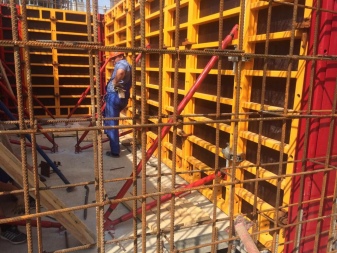
When the panel formwork fulfills its function, that is, after the concrete has hardened, it can be removed within the framework of the established rules and regulations.
How to install the panel formwork, see the video.













The comment was sent successfully.